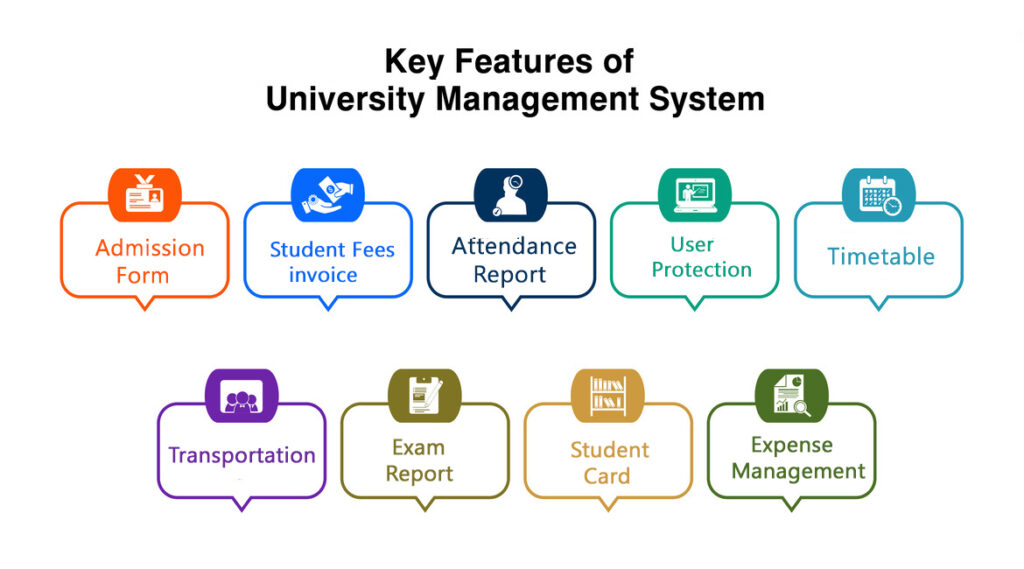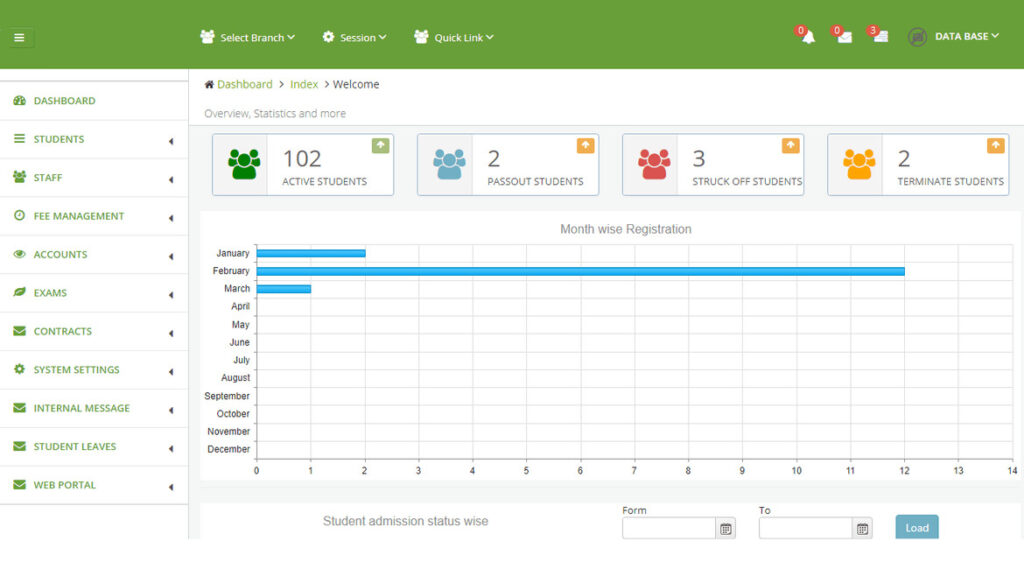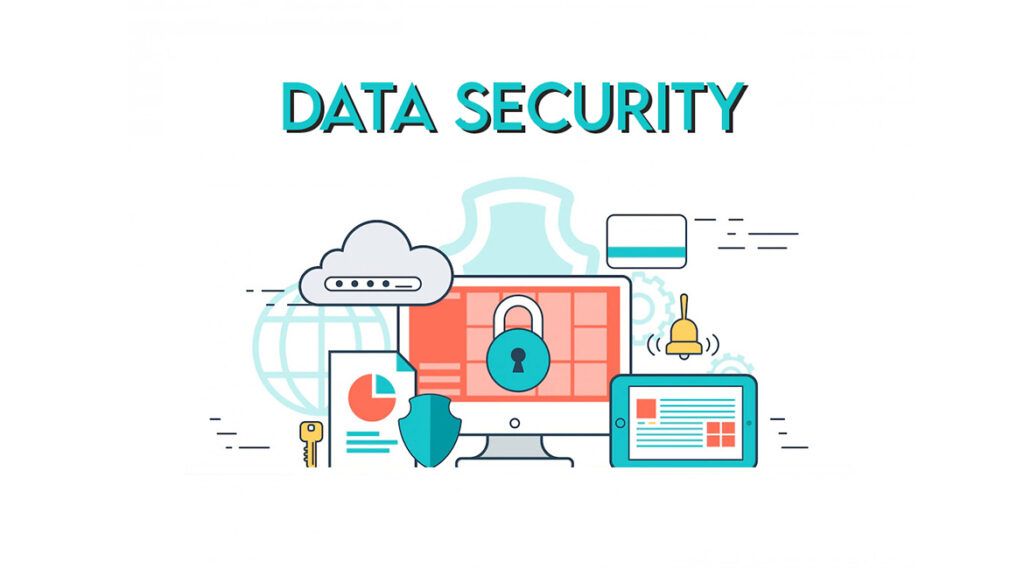A Comprehensive Guide on University Management System
What is a university management system?
A university management system refers to a technological tool that automates tasks and is based in the cloud. It is a complete solution for tasks such as student enrollment, admission, onboarding, fee management, payroll management for professors, and supporting online learning for students. By reducing manual work, the university management software ensures the accuracy, reliability, and integrity of records, information, and intellectual property.
Features of a university management software:

Some key features are below:
- Admission Form
- Student Fees invoice
- Attendance Report
- Username and Password Protection
- Timetable
- Transportation
- Exam Report
- Student Card
- Expense Management
- Query Form
- Results Cards
- Online support
- Academic Solution
- Classroom Management
- Messages
- Manage Marks
A University Management Software is an education ERP system that enables instructors, students, parents, outside vendors, and learning providers to collaborate and share information on a common platform. The software automates notifications to all stakeholders regarding attendance, announcements, results, campus updates, and timetable changes, among others.
The university management software can be customized to fit the unique procedures and requirements of each institution. This technology facilitates the management of all university departments and synchronizes their operations automatically. The software provides robust data encryption for secure data/information handling, and it eliminates data corruption caused by human errors or mistakes. The university management software offers both offline and online 24*7 support for its users.
University Management Software comes in different types and serves different purposes. For instance, the Academic Type of University Management Software tracks student progress, generates learning materials, conducts exams, and verifies outcomes. Some university management systems in Pakistan, Europe, and the Americas also automate convocation procedures and the issuance of undergraduate and graduate degrees. In summary, a University Management Software is a comprehensive solution for managing universities, enhancing collaboration, and ensuring data security.
User Interface of University Management System:

The user interface of the school management system enables the users, which include teachers, students, and administrative staff, to access the system with ease. Users can log in to their respective accounts using their personal credentials, and the system’s homepage will provide them with all the necessary information they need to access different functions.
The user interface is designed to be simple and intuitive; each user can navigate through the system quickly and efficiently. The main menu contains links to various modules, including attendance, grading, timetable, library, and finance. Each of the modules provides the user with the necessary tools and functions to complete their tasks effectively.
University Management Software:
University Management Software (UMS) is a powerful tool that provides various features and benefits to the university administration, faculty, staff, and students. The software ensures data security with strong encryption and eliminates data corruption due to human errors. It offers offline and online 24/7 support, giving users the convenience of using the system anytime, anywhere. The UMS is flexible and customizable, allowing universities to configure procedures that suit their specific requirements.
University management systems of the finance and accounting variety:
The UMS has different types and purposes, including the Academic Type, Finance and Accounting Type, and HR Type. The Academic Type of UMS tracks student progress, generates learning materials, conducts exams, and verifies outcomes. It also facilitates automated convocation procedures and the issuance of undergraduate and graduate degrees in some systems across Pakistan, Europe, and the Americas.
The Finance and Accounting Type of UMS handles payments from students and provides reporting and financial statistics modules. It also offers a complete financial and accounting feature-set designed for the university’s finance and administration department.
University Management System for HR:
The HR Type of UMS helps in managing personnel by the university administration, allowing control of working hours, task recording, deadline management, and job sharing. The software is flexible and adaptable, enabling modules to be altered to meet specific requirements or used more generally. In summary, UMS is an essential tool that aids universities in managing their operations efficiently, ensuring the integrity and accuracy of records, and promoting collaboration among various stakeholders.
Department Management with University Management Software:
A university is a complex organization comprising of multiple individuals, departments, procedures, and tools that require coordination and unity. The level of cooperation needed varies based on factors such as departmental dynamics, assignment nature, university procedures, and events. To facilitate such intricate use-cases of departmental connectivity, the right University Management system is necessary. UMS should allow departments to work independently, publicly, and cooperatively simultaneously.
Inventory and Library Management with University ERP:
A university possesses a vast array of inventory types and quantities, and its digital library system could benefit from sound knowledge management strategies. The library system could offer educational materials from other providers, and administration of all this is necessary.
Manual management is not scalable, and an inventory and library management University Management system software could aid in efficient and scalable support of stock-keeping and knowledge management.
Advantages of a University Management System:
Centralized Admissions:
University Management System could assist potential student their online University applications. With education ERP software, the admissions process could be automated, saving instructors the need to manually review applications. The software could review the information and ask students for further information, if necessary. Since automation is possible for data entry, verification, validation, and storage, the admission module could help students with online onboarding, acknowledgements, and payment of admission fees.
Choice-Based Education System:
Every institution offers a required curriculum and selective study options, available to students through education University Management software. The choice-based education system could enable students to specialize in specific disciplines, gain knowledge, and broaden horizons. The University Management system could provide virtual laboratories, theory classes, practical-base d education, project work, feedback, and outcomes management, among other services.
Ease of Operation:
Running a university is a complex process, and University Management system should aim to reduce complexity and increase operational simplicity. The system should have simple, self-explanatory controls and UI elements and be user-friendly for non-technical people.
Better Communication:
High degrees of cooperation exist among all university departments, organizations, and operations. The university ERP ensures that no opportunities for miscommunication between any departments exist, and every interdepartmental exchange is documented and available. Open and honest lines of communication could also exist.
Data Security:

Digital data is easy to store, transmit, record, and access, but it could become corrupt or stolen if not handled correctly. To ensure data integrity, the University Management software should use data redundancy technology, implement disaster recovery strategies for data resiliency, and prevent access to data without authentication or authorization using access control lists and robust encryption.
As Mobile App Development Company and Web development company, we also provide University management system and University management software including software, mobile application and website, please check them out as well.
Want us to call back? Hit this link.
Frequently Asked Questions (FAQ’S):
- What is university management software?
University management software is a comprehensive platform designed to automate and streamline various administrative and academic processes in a university. It typically includes features such as student information management, enrollment and admissions management, course management, grading and assessment, faculty management, financial management, and more.
- What are the advantages of using software for university management?
Using university management software can provide many benefits, such as increased efficiency and accuracy in managing student and faculty data, improved communication between different departments and stakeholders, enhanced data security and privacy, better student engagement and retention, and more effective financial management.
- Is university management software customizable to my university’s needs?
Yes, many university management software solutions are customizable and can be tailored to meet the specific needs and requirements of your university. Some software vendors also offer custom development services to create bespoke solutions.
- How easy is it to implement university management software?
The ease of implementation of university management software can vary depending on the specific solution and the complexity of your university’s processes. However, many software vendors offer support and training to ensure a smooth and successful implementation.
- Can university management software integrate with other systems?
Yes, university management software can integrate with other systems. In fact, integration is a crucial feature of modern university management software.
University management software typically manages a range of functions, such as student enrollment, course scheduling, faculty management, and financial management. To perform these functions effectively, university management software often needs to communicate with other systems and applications, such as student information systems, learning management systems, financial management systems, and human resources systems.
- What kind of technical support is available for university management software?
Most software vendors offer technical support for their university management software solutions, including phone and email support, online documentation, and user forums. Some vendors may also offer on-site support or dedicated account managers.
- How secure is university management software?
University management software typically employs a range of security measures to ensure data privacy and protection, such as encryption, access controls, and regular data backups. It’s important to choose a software solution that complies with relevant data privacy regulations.
- How does university management software help with financial management?
University management software can help with financial management by providing tools for budgeting, expense tracking, invoicing, and financial reporting. It can also automate processes such as billing and payment collection.
- Can university management software improve student engagement?
Yes, university management software can improve student engagement by providing tools for online collaboration, communication, and feedback. It can also offer personalized learning experiences, such as adaptive learning and gamification.
- What is the cost of university management software?
The cost of university management software can vary depending on the specific solution, the size of your university, and the features and functionalities you require. Some software vendors offer subscription-based pricing models, while others may charge a one-time license fee. It’s important to evaluate the total cost of ownership, including implementation, training, and ongoing support, when considering different software solutions.
Have some time? Visit our Website or Facebook page to know more.



